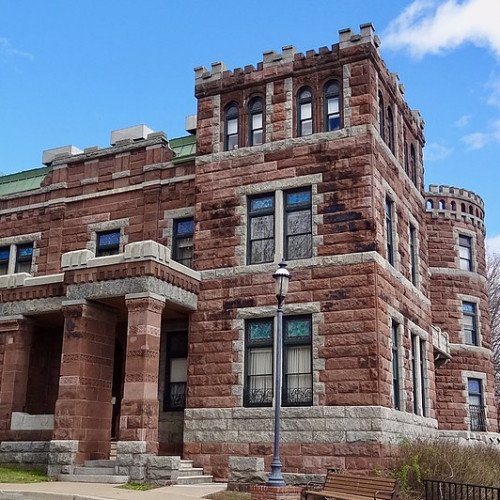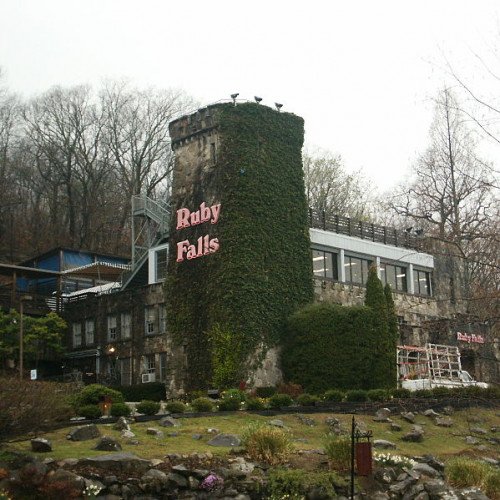Castles of "United States" LAMBERT CASTLE vs LOOKOUT MOUNTAIN CASTLE

LAMBERT CASTLE
Lambert Castle, originally called Belle Vista, is located within the Garret Mountain Reservation in Paterson, Passaic County, New Jersey. The building was built in 1892 and was added to the National Register of Historic Places on June 3, 1976 for its significance in art, architecture, and industry. Lambert Castle was built in 1892 as the home of Catholina Lambert, the owner of a prominent silk mill in the City of Paterson. Constructed in the Medieval Revival architectural style, Mr. Lambert's dream was to build a home reminiscent of the castles in Great Britain that he remembered from his boyhood years. President William McKinley and Vice President Garret Hobart visited the castle in 1898. In June 1910, filmmaker D. W. Griffith shot The Call To Arms on the grounds. The film was released in July 1910. The cast included Mary Pickford (in her only male role) and Henry B. Walthall. Film Preservation Society, Inc. is currently restoring the film as part of The Biograph Project. After Lambert's death in 1923, his family sold the building to the City of Paterson, which in turn sold it to Passaic County a few years later. Passaic County used the building for administrative offices, and in 1936, provided one room to the fledgling Passaic County Historical Society to serve as its historical museum. As time went by the museum grew, room by room, until the entire first floor became the historical museum. In the late 1990s, the Castle underwent a multimillion-dollar restoration and all four floors of the building were developed into a museum and library.
Statistics for this Xoptio

LOOKOUT MOUNTAIN CASTLE
Ruby Falls is a series of underground cascading waterfalls totaling 145 feet (44 m) in Lookout Mountain, near Chattanooga, Tennessee, in the United States. Ruby Falls Cave, unlike Lookout Mountain Cave, had no natural openings and could not be entered until the 20th century; it therefore does not have the various artifacts which are often associated with caves in the southeastern United States. In 1905 the natural entrance to Lookout Mountain Cave was closed during the construction of a railway tunnel. In the 1920s a chemist and cave enthusiast named Leo Lambert thought that he could re-open the cave as a tourist attraction, and formed a company to do so. He planned to make an opening farther up the mountain than the original opening and transport tourists to the cave via an elevator. For this purpose, his company purchased land on the side of Lookout Mountain above Lookout Mountain Cave and in 1928 began to drill through the limestone. In doing so, they discovered a small passageway about 18 inches high and four feet wide. Exploring this opening, Lambert discovered the formerly hidden Ruby Falls Cave and its waterfall. On his next trip to visit the cave, Lambert took his wife Ruby, and told her that he would name the falls after her. After the discovery of the cave housing Ruby Falls the tunnelers kept digging to locate the original cave they were searching for, the Lookout Mountain caverns, which they reached 1,120 feet underground. On December 30, 1929 the Lookout Mountain caverns were open to the public, and by the following year in June the Ruby Falls cave was expanded and opened as well. By 1935 the lower of the two caves was blocked off due to Ruby Falls being the far more popular of the two caves. In 1954, the pathway around the basin was cut in order to allow tourists a better view of the falls. This began the tour-related quip regarding not drinking the falls' water. Though pure and thus safe to drink, it has large concentrations of magnesium from the strata of the mountain, which makes it a natural laxative.